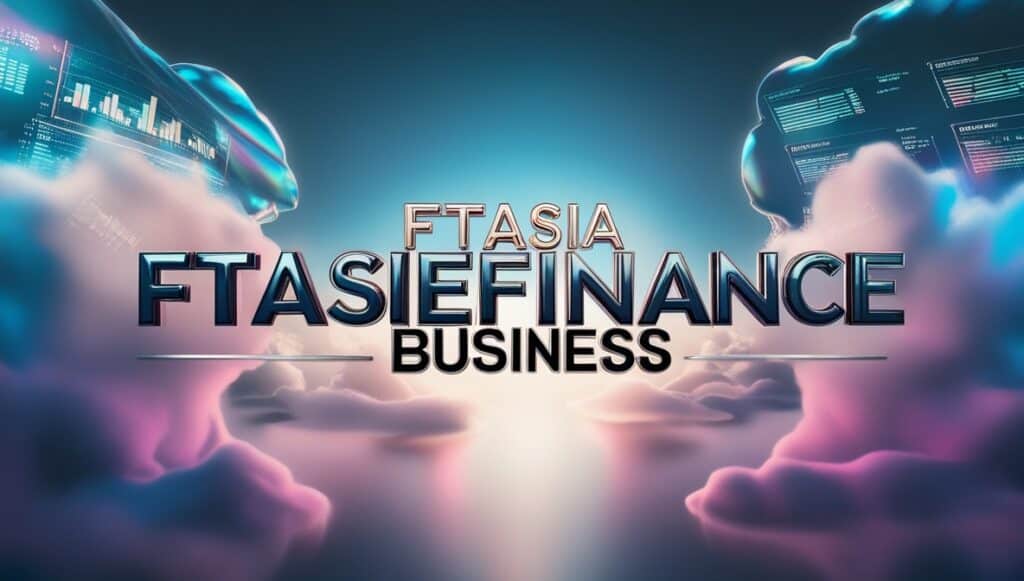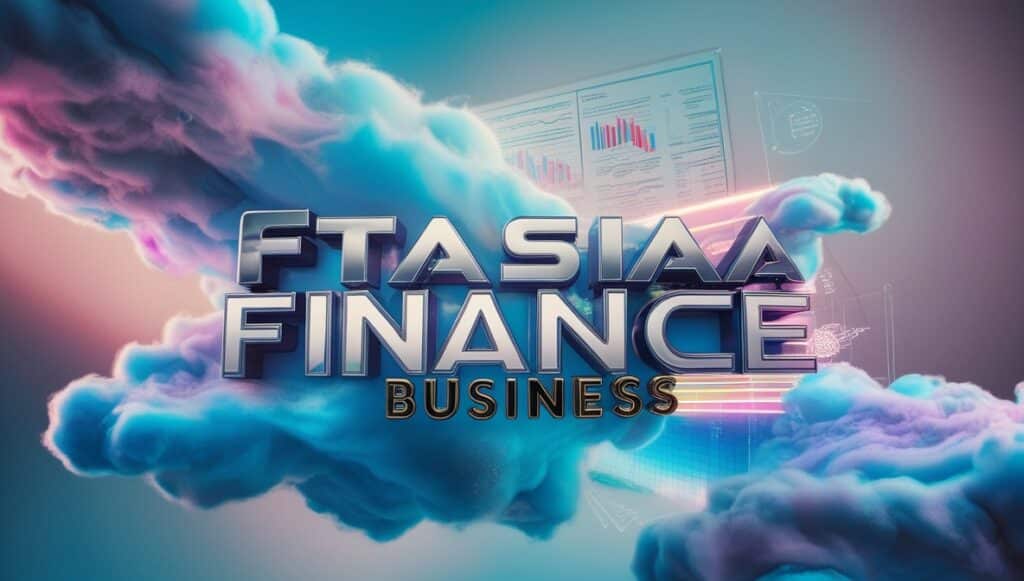Financial technology isn’t just growing in Asia—it’s absolutely exploding. The ftasiafinance business scene is rewriting the rules of money, investment, payments, and banking across the continent. It’s fast, it’s fierce, and it’s unlike anything else in the world.
Asia’s fintech story didn’t begin with smartphones or even the cloud. This digital revolution is rooted in a history of adaptation, cultural nuance, and a deep hunger for inclusion and innovation.
Let’s unpack this wild journey and see why FTAsiaFinance is something every global investor, founder, and regulator should be keeping a hawk-eye on.
🧭 From SMS Banking to Super Apps: How Asia’s Fintech Came Alive
Before smartphones, there was text banking.
In the early 2000s, countries like the Philippines were already using SMS for remittances. Japan had online brokerage systems long before most in the West took them seriously. South Korea was flirting with digital wallets before Apple even thought about Apple Pay.
But it wasn’t until smartphones landed in everyone’s pockets that Asia’s fintech really started flying.
Then came 2020. The pandemic didn’t just accelerate adoption—it smashed every barrier that held it back. Governments digitized overnight. People who had never used a digital wallet were suddenly buying groceries through one. It was digital finance on steroids.
🌏 Who’s Driving the Bus? The People and Places Behind ftasiafinance Business
🚀 The Big Three: Singapore, Hong Kong, Shanghai
Let’s be honest—Singapore is Asia’s fintech darling. It’s stable, regulatory-friendly, and laser-focused on innovation. MAS (Monetary Authority of Singapore) acts more like a startup incubator than a regulator. That’s not a joke.
Hong Kong? A little slower, a little more cautious. But still a heavy hitter, especially in cross-border finance.
Shanghai? Quietly building massive blockchain infrastructure and becoming a CBDC (central bank digital currency) leader.
| Hub | Strengths | Notable Firms |
|---|---|---|
| Singapore | Digital banking, regtech, crypto | Grab, SeaMoney |
| Hong Kong | Cross-border, wealthtech | ZA Bank, WeLab |
| Shanghai | Blockchain, CBDC | Ant Group, Lufax |
🌱 The Rise of the Underdogs: Vietnam, Indonesia, Philippines
If you’re not watching these markets, you’re missing out.
- Vietnam: Young population, digital-first mindset, and mobile usage that’s off the charts.
- Indonesia: 270 million people, many unbanked, and now one of the world’s fastest-growing BNPL markets.
- Philippines: Remittances are huge here—over $36 billion in 2023—and fintech is helping cut transfer costs dramatically.
Startups here don’t have the luxury of slow growth. They’re solving real pain in real time.
🛡️ Regulation, But Make It Innovative

Asia’s fintech isn’t just thriving because of user demand. Smart regulation is playing a massive role.
- Regulatory sandboxes: Countries like Malaysia, Thailand, and Singapore are letting startups test products in live environments.
- Open banking mandates: India’s UPI system and Indonesia’s open finance initiatives are breaking down old silos.
- Cross-border frameworks: The ASEAN Payment Connectivity initiative is trying to make Southeast Asia one payments zone.
Honestly, some Western regulators could take notes.
💰 Follow the Money: Where VC is Flowing
Let’s talk investment. Asia is getting a ton of fintech VC dollars.
- In 2024, over $9.3B went into fintech startups across Asia.
- India and Southeast Asia accounted for over 40% of those deals.
- BNPL, wealthtech, and embedded finance are red-hot categories.
“We’re seeing fintech evolve into everything-tech. If it’s got users and transactions, it’s a fintech company now.” — VC Partner, Jakarta
Top Investment Trends:
- AI-first financial services
- Decentralized finance (DeFi) but regulated
- Climate-focused fintech
- Fintech for freelancers and gig workers
🤖 Not Just Chatbots: Tech Changing the Game
AI That Actually Does Stuff
Forget scripted chatbots. We’re talking predictive credit scoring, AI fraud detection, and automated investment portfolios based on real-time behavioral data.
Blockchain… But Not Just Crypto
Governments are deploying blockchain for trade finance and digital ID systems. China’s Digital Yuan is already used in several pilot cities. It’s happening now.
Biometric Identity = No More Passwords
From face-based ATM access in Japan to voiceprint verification in India, Asia’s leading the pack in biometric security. It’s convenient. It’s safer. It’s the future.
📱 Super Apps: Only-in-Asia Fintech
No one does super apps like Asia.
Grab. Gojek. Kakao. WeChat. These aren’t just ride-hailing or messaging apps—they’re banks, wallets, marketplaces, and investment platforms all rolled into one.
And guess what? Users love it.
The idea of downloading 5 separate apps to manage your money? Nah. One app to rule them all, please.
🏦 Why Traditional Banks Are Nervous
Traditional banks in Asia? They’re sweating.
They still have big customer bases, but agility is not their thing. Fintechs can spin up a new product in 3 months. Banks take a year just to get internal approvals.
Case in point: In Singapore, digital-only banks like Trust Bank are signing up hundreds of thousands of users in months—without branches.
South Korea’s KakaoBank hit profitability faster than any traditional bank could dream of.
📉 The Unbanked Opportunity: Still Massive
Despite all this progress, over 1 billion adults in Asia still don’t have a bank account.
But most have a smartphone. That’s the golden ticket.
Fintechs are using QR codes, USSD, micro-loans, and agent banking to reach them. And it’s working.
💸 Payments: Where Asia Just Dominates
QR codes in Asia are like breathing air. It’s everywhere.
Thailand’s PromptPay, India’s UPI, and China’s Alipay have created cashless economies faster than anyone thought possible.
Real-time payments are now table stakes. If you’re waiting 3 days for a bank transfer in Asia? Something’s broken.
📊 Investing for the Masses: WealthTech’s Moment
Everyone wants to invest now—even people with just $5.
Platforms like StashAway, Groww, Syfe are making micro-investing easy.
Robo-advisors are popular, especially when they offer religious-compliant or ESG-focused portfolios. It’s not one-size-fits-all anymore.
Alternative investing—from digital gold to fractional real estate—is also booming.
“We don’t just want people to save. We want them to grow.” — CEO, WealthTech firm in Mumbai
🧾 RegTech and Compliance: Easier, Not Slower
Compliance isn’t sexy, but it’s necessary.
In Asia, AI-powered KYC tools are cutting onboarding times by 80%. AML (anti-money laundering) systems are now pattern-based, not rule-based.
And with so much cross-border movement, multi-jurisdiction compliance platforms are big business.
🌱 The ESG Wave Is Real
Green fintech isn’t just a trend—it’s a differentiator.
Platforms like Ammara in Indonesia and TandemTree in the Philippines are allowing users to offset their carbon via their digital banking habits.
Investors want sustainability. Users do too.
✅ How to Ride the Wave: A Business Guide
Thinking of entering the ftasiafinance business? Don’t wing it.
Ask Yourself:
- Are we solving a real problem?
- Is the market over-served or under-served?
- Can we localize better than incumbents?
Partner Smart:
- Collaborate with telcos, not just banks.
- Work with regulators early.
- Consider a build + partner hybrid approach.
Track These KPIs:
- CAC to LTV ratio
- Churn rate by cohort
- Fraud loss per transaction
- Regulatory penalty risks
🔮 What’s Next for ftasiafinance Business?
- Metaverse banking? Still early days, but virtual real estate loans are already being trialed.
- Embedded finance is getting baked into e-commerce, edtech, and even health apps.
- Quantum security is the next battleground, especially for CBDCs.
- Financial inclusion via AI chat interfaces in rural dialects—this will be big.
📚 Case Studies: Lessons That Matter
Case Study: A Unicorn’s Rise
PayMaya, now Maya Bank in the Philippines, started as a prepaid wallet. Now it’s a licensed bank with over 2 million depositors. Key? User-first design and telco partnerships.
Case Study: Failure to Scale
A BNPL player in Vietnam expanded too fast without understanding local credit culture. Within 9 months, NPLs (non-performing loans) were 40%. They shut down.
Case Study: Traditional Bank Goes Digital
DBS Bank (Singapore) invested early in APIs, design thinking, and internal hackathons. Result? It’s now considered the most digital traditional bank in the world.
🎯 Final Thoughts
Asia is not just keeping up with fintech innovation—it’s leading. And it’s not slowing down.
Whether you’re a startup, a bank, a VC, or just watching from the sidelines, one thing’s clear:
The ftasiafinance business scene is where the future of money is being written.
And it’s being written in bold.
Keywords used: ftasiafinance business, Asian fintech, fintech in Asia, digital banking Asia, fintech regulation, Asian financial technology, fintech startups Asia, Southeast Asia fintech, wealthtech, regtech, green finance, AI in finance, blockchain Asia, financial inclusion.
Let me know if you’d like this in a downloadable format or turned into a newsletter edition.





